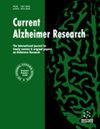阿尔茨海默病评估量表-认知亚量表在轻度认知障碍和阿尔茨海默病筛查中有用吗?系统回顾。
IF 1.9
4区 医学
Q3 CLINICAL NEUROLOGY
引用次数: 1
摘要
背景:对轻度认知障碍(MCI)和阿尔茨海默病(AD)进行筛查,以区分老年人的认知能力下降是否归因于病理原因而不是正常衰老。目的分析阿尔茨海默病评估量表-认知子量表(ADAS-Cog)在MCI和AD筛查中的诊断效果。方法在MEDLINE、EMBASE、CINAHL和PsycArticles数据库中进行电子检索,检索关键词为痴呆和ADAS-Cog。诊断准确性研究质量评估-2用于检查诊断研究的偏倚风险。结果我们回顾了14项研究,包括3875名符合选择标准的患者。在9项研究的2,624例MCI患者中,ADAS-Cog的合并敏感性为0.80(95%可信区间[CI], 0.68 ~ 0.88),合并特异性为0.84 (95% CI, 0.75 ~ 0.90),总接受者-工作特征曲线曲线下面积(SROC AUC)为0.89 (SE = 0.03)。在10项研究的2517例AD患者中,合并敏感性和合并特异性分别为0.91 (95% CI, 0.86-0.95)和0.93 (95% CI, 0.88-0.95), sROC AUC为0.97 (SE = 0.01)。虽然根据年龄和受教育年限进行了亚分析,但ADAS-Cog的预测效度没有显著差异。结论ADAS-Cog作为MCI和AD的筛查工具具有较高的预测效度,但对AD患者的诊断效果更好。当需要对AD进行早期筛查时,ADAS-Cog是一种可初始使用的第一阶段筛查方法。本文章由计算机程序翻译,如有差异,请以英文原文为准。
Is the Alzheimer's Disease Assessment Scale-Cognitive Subscale useful in screening for mild cognitive impairment and Alzheimer's disease? A systematic review.
BACKGROUND
Mild cognitive impairment (MCI) and Alzheimer's disease (AD) are screened to distinguish whether cognitive decline in older adults is attributed to pathological causes rather than normal aging.
OBJECTIVE
The purpose of this review was to analyze the diagnostic performance of the Alzheimer's Disease Assessment Scale-Cognitive Subscale (ADAS-Cog) in screening for MCI and AD.
METHODS
Electronic searches were performed on MEDLINE, EMBASE, CINAHL, and PsycArticles databases using the following keywords: dementia and ADAS-Cog. The Quality Assessment of Diagnostic Accuracy Studies-2 was used to checked the risk of bias in the diagnostic studies.
RESULTS
We reviewed 14 studies, including 3,875 patients who met the selection criteria. In 2,624 MCI patients from nine studies, the pooled sensitivity of ADAS-Cog was 0.80 (95% confidence interval [CI], 0.68-0.88), the pooled specificity was 0.84 (95% CI, 0.75-0.90), and the area under the curve of summary receiver-operating characteristic curves (SROC AUC) was 0.89 (SE = 0.03). In 2,517 AD patients from 10 studies, the pooled sensitivity and pooled specificity were 0.91 (95% CI, 0.86-0.95) and 0.93 (95% CI, 0.88-0.95) respectively, and the sROC AUC was 0.97 (SE = 0.01). Although sub-analyzed according to age and years of education, there was no significant difference in the predictive validity of the ADAS-Cog.
CONCLUSION
The ADAS-Cog has high predictive validity as a screening tool in both MCI and AD, but has better diagnostic performance in patients with AD. When early screening for AD is desired, ADAS-Cog is a first-stage screener that can be initially employed.
求助全文
通过发布文献求助,成功后即可免费获取论文全文。
去求助
来源期刊

Current Alzheimer research
医学-神经科学
CiteScore
4.00
自引率
4.80%
发文量
64
审稿时长
4-8 weeks
期刊介绍:
Current Alzheimer Research publishes peer-reviewed frontier review, research, drug clinical trial studies and letter articles on all areas of Alzheimer’s disease. This multidisciplinary journal will help in understanding the neurobiology, genetics, pathogenesis, and treatment strategies of Alzheimer’s disease. The journal publishes objective reviews written by experts and leaders actively engaged in research using cellular, molecular, and animal models. The journal also covers original articles on recent research in fast emerging areas of molecular diagnostics, brain imaging, drug development and discovery, and clinical aspects of Alzheimer’s disease. Manuscripts are encouraged that relate to the synergistic mechanism of Alzheimer''s disease with other dementia and neurodegenerative disorders. Book reviews, meeting reports and letters-to-the-editor are also published. The journal is essential reading for researchers, educators and physicians with interest in age-related dementia and Alzheimer’s disease. Current Alzheimer Research provides a comprehensive ''bird''s-eye view'' of the current state of Alzheimer''s research for neuroscientists, clinicians, health science planners, granting, caregivers and families of this devastating disease.
 求助内容:
求助内容: 应助结果提醒方式:
应助结果提醒方式:


